
Dunkerque was the lead ship of the Dunkerque class of battleships built for the French Navy in the 1930s. The class also included Strasbourg. The two ships were the first capital ships to be built by the French Navy after World War I; the planned Normandie and Lyon classes had been cancelled at the outbreak of war, and budgetary problems prevented the French from building new battleships in the decade after the war. Dunkerque was laid down in December 1932, was launched October 1935, and was completed in May 1937. She was armed with a main battery of eight 330mm/50 Modèle 1931 guns arranged in two quadruple gun turrets and had a top speed of 29.5 knots.

Bretagne was a large 110-gun three-decker French ship of the line, built at Brest, which became famous as the flagship of the Brest Fleet during the American War of Independence. She was funded by a don des vaisseaux grant by the Estates of Brittany. She was active in the European theatres of the Anglo-French War and of the French Revolutionary Wars, notably taking an important role in the Glorious First of June. Later, she took part in the Croisière du Grand Hiver and was broken up.

Strasbourg was the second and final member of the Dunkerque class of fast battleships built for the French Navy in the 1930s. She and her sister ship Dunkerque were designed to defeat the German Deutschland class of heavy cruisers that had been laid down beginning in the late 1920s, and as such were equipped with a battery of eight 330 mm (13 in) guns to counter the six 280 mm (11 in) guns of the Deutschlands. Strasbourg was laid down in November 1934, was launched in December 1936, and was commissioned in September 1938 as the international situation in Europe was steadily deteriorating due to Nazi Germany's increasingly aggressive behavior.
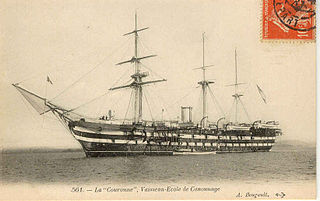
The French ironclad Couronne ("Crown") was the first iron-hulled ironclad warship built for the French Navy in 1859–1862. She was the first such ship to be laid down, although the British armoured frigate HMS Warrior was completed first. The ship participated in the Franco-Prussian War of 1870–1871, but saw no combat. She was served as a gunnery training ship from 1885 to 1908 before she was hulked the following year and became a barracks ship in Toulon. Couronne was scrapped in 1934, over 70 years after she was completed.
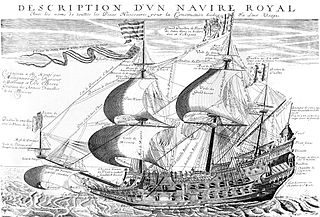
Couronne was an emblematic ship of the French Navy built by order of Richelieu.

Fourteen ships of the French Navy or the Galley Corps of the Ancien Régime or Empire have borne the name Couronne ("crown"):

The Couronne was an 80-gun ship of the line of the French Navy.

The Téméraire-class ships of the line were a class of a hundred and twenty 74-gun ships of the line ordered between 1782 and 1813 for the French navy or its attached navies in dependent (French-occupied) territories. Although a few of these were cancelled, the type was and remains the most numerous class of capital ship ever built to a single design.
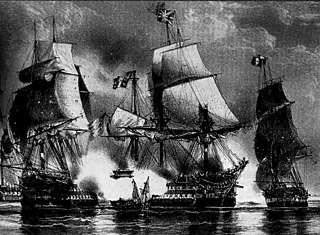
The Saint-Esprit group was a type of three 80-gun ships of the line of the French Navy. They did not constitute a single class, as each was built to a separate design, but they each carried a standard ordnance amounting to 80 guns.
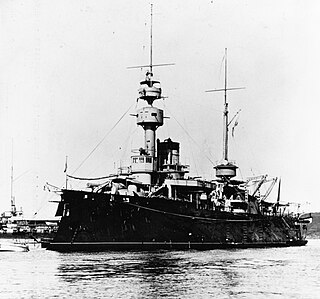
Amiral Baudin was an ironclad barbette ship of the French Navy built in the late 1870s and 1880s. She was the lead ship of the Amiral Baudin class, which included one other vessel, Formidable. The Amiral Baudin class was designed in response to Italian naval expansion, and carried a main battery of three 370 mm (14.6 in) guns all mounted in open barbettes on the centerline. The armament was chosen after public pressure to compete with the very large guns mounted on the latest Italian ironclads. Amiral Baudin was laid down in 1879 and was completed in 1888.
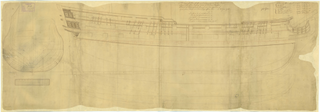
HMS Orford was a 70-gun third rate ship of the line of the Royal Navy, built to the draught specified by the 1745 Establishment at Woolwich Dockyard, and launched in 1749.

Bayonnaise was a 24-gun corvette of the French Navy, launched in 1793. She became famous for her capture of HMS Ambuscade on 14 December 1798. Her crew destroyed Bayonnaise in November 1803 to prevent her capture.
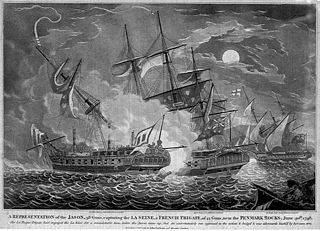
HMS Jason was a 38-gun Artois-class fifth-rate frigate of the Royal Navy. She served during the French Revolutionary Wars, but her career came to an end after just four years in service when she struck an uncharted rock off Brest and sank on 13 October 1798. She had already had an eventful career, and was involved in several engagements with French vessels.
The Couronne was an 80-gun Saint-Esprit-class ship of the line of the French Navy.

Hector was a 74-gun ship of the line of the French Navy, lead ship of her class. Hector was launched in 1755 and fought in the American Revolutionary War during which she captured two ships of the British Royal Navy on 14 August 1778. In 1782, the ship was captured by the Royal Navy at the Battle of the Saintes in 1782. Taken into service by the Royal Navy, the vessel was renamed HMS Hector. On 5 September 1782. HMS Hector fought two French frigates. Severely damaged during the battle, and by a hurricane that followed later in September, Hector sank on 4 October 1782.
The Foudroyant was a First Rank ship of the line of the French Royal Navy, the lead vessel in the two-ship Foudroyant Class.

Furieux was an ironclad coastal defense ship built for the French Navy in the late 1870s and 1880s. She was ordered under the fleet plan of 1872 that was intended to strengthen the French fleet after the Franco-Prussian War. Originally intended to be similar to the Tonnerre class, Furieux was re-designed after the German Sachsen-class ironclads had begun construction, as the earlier French coastal defense ships were too weak to defeat the Sachsens. Instead of carrying her main armament of two guns in a single gun turret like Tonnerre and other French coastal defense ships, Furieux mounted a pair of guns in two barbettes that allowed her to fire one ahead or astern at any angle. Her guns were significantly larger than the earlier vessels as well, increasing from the 270 mm (10.6 in) guns of her predecessors to 340 mm (13.4 in) weapons. Her design suffered from several problems, including insufficient freeboard and poor stability, both of which reduced her ability to operate in open water. She was also badly overweight, which submerged her belt armor, greatly reducing her defensive characteristics.

Descartes was the lead ship of the Descartes class of protected cruisers built for the French Navy in the 1890s. The Descartes-class cruisers were ordered as part of a construction program directed at strengthening the fleet's cruiser force. At the time, France was concerned with the growing naval threat of the Italian and German fleets, and the new cruisers were intended to serve with the main fleet, and overseas in the French colonial empire. Descartes was armed with a main battery of four 164.7 mm (6.5 in) guns, was protected by an armor deck that was 20 to 40 mm thick, and was capable of steaming at a top speed of 19 knots.
This page is based on this
Wikipedia article Text is available under the
CC BY-SA 4.0 license; additional terms may apply.
Images, videos and audio are available under their respective licenses.















